Women in Science

To mark the UN’s International Day of Women and Girls in Science, we asked some of our leading female scientists what inspires them and what advice they would give to females and young girls looking to pursue a career in science…
Dr Sascha Hooker, Reader, School of Biology
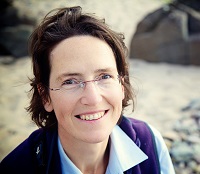
Sascha is a marine ecologist at the Sea Mammal Research Unit (SMRU). Sascha has been involved in research into the ecology and conservation of marine mammals since 1993. She has three main areas of research: the interaction between marine mammal behaviour and the surrounding environment, the physiological mechanisms underpinning diving behaviour, and the application of these to conservation planning in the ocean. Sascha completed her undergraduate research in Zoology with Anthropology at the University of Oxford, then did her PhD research at Dalhousie University, Canada, where she studied the foraging ecology of northern bottlenose whales in eastern Canada, completing this in 1999. She held a postdoctoral fellowship at the British Antarctic Survey working on Antarctic fur seal foraging in South Georgia, and a UK Royal Society Dorothy Hodgkin Fellowship (from 2003 to 2010) at St Andrews, working more generally on marine mammal foraging strategies. She has reduced her hours to a half-time position since 2004 when she had the first of her three children.
What was your childhood ambition?
I grew up with the first NASA space shuttle expeditions and Carl Sagan’s book Cosmos dominated my imagination as a child. I loved the idea of being an explorer.
What inspired you to get involved in Marine Biology?
In fact, my A-level choices were maths, chemistry and physics, and I thought I would be a chemist. It was only when I became involved in scuba diving that I realised just how amazing the ocean was. Involvement in a university conservation expedition cemented my desire to work in marine conservation. My PhD was spent looking at the ecology and conservation of a relatively unknown whale – the northern bottlenose whale.
Who are your scientific heroes?
Sir Joseph Hooker (an eminent botanist and friend of Charles Darwin’s) was actually my great-great-grandfather, and he is a bit of a hero. He was involved in botanical expeditions all over the world and was the ‘founder of geographical botany’. Many plants and even a sea lion in New Zealand bear the name ‘hookeri’. On my way to South Georgia to work on the fur seals there, I even got to stand on ‘Hooker’s Point’ in the Falkland Islands, presumably named after him when the James Clark Ross expedition that he was part of stopped there for the winter.
What is the most rewarding part of your job?
The ability to keep challenging yourself is one of the greatest parts of this job. This job is amazingly diverse: I love research and the finding out of the previously unknown, but teaching, and even our administrative duties, can keep us on our toes. So we are constantly challenged in terms of new ideas, new studies, new fieldwork, learning new analysis tools, making our results available to others, teaching students and even inspiring school kids. I have become particularly interested in some of the new technologies we can use to study marine mammals – from my PhD spent trying to attach dataloggers to northern bottlenose whales, to my work looking at prototype oceanographic and digital camera tags on Antarctic fur seals.
What advice would you give to females and young girls who may be interested in pursuing a career in your field?
Go for it. Follow your passion. There are many more opportunities these days than in the past – embrace them.
Dr Tracey Gloster, Wellcome Trust Research Fellow, School of Biology
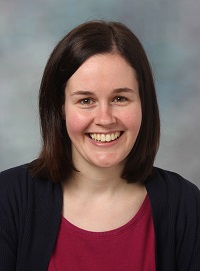
Tracey completed her undergraduate Bsc (Hons) degree in Biochemistry at the University of Warwick, and subsequently undertook a PhD in biochemistry/structural biology at the University of York under the supervision of Professor Gideon Davies. Following this she spent a short period working as a postdoctoral fellow in York, before being awarded a Sir Henry Wellcome Postdoctoral Fellowship by the Wellcome Trust. Tracey spent the majority of this fellowship at Simon Fraser University, Canada, working under the mentorship of Professor David Vocadlo. Tracey returned to the UK in 2012 with a Wellcome Trust Research Career Development Fellowship which she holds at the University of St Andrews. Tracey was awarded a Biochemical Society Early Career Research award in 2012 and a L’Oreal Fellowship for Women in Science in 2013, and was elected to the Young Academy of Scotland in 2016.
What was your childhood ambition?
To be honest I can’t remember if I ever really had an ambition! I always liked science and maths subjects at school, and at one point wanted to be an accountant or statistician. While taking my GCSEs the love of science took hold and I knew I wanted to study the science subjects in more depth. I don’t think I ever had the ambition to specifically be a research scientist at a university, primarily because I wasn’t aware this career existed when I was younger.
What inspired you to get involved in biochemistry?
I enjoyed both biology and chemistry subjects at GCSE and A-level, but what I found most interesting and exciting was when we learnt about the underlying chemistry in biological processes. I found understanding complex processes such as how we generate energy from the food we eat or how plants harness energy from the sun in order to sustain life fascinating, and so I decided to pursue a degree in biochemistry when I went to university.
Who are your scientific heroes?
It has to be some of the iconic females that have been very successful in my area of science in an era when the science world was greatly dominated by males. One of these is Rosalind Franklin who played a pivotal role in discovering the structure of DNA, but unfortunately passed away before the real importance of her work was recognised, and didn’t receive a Nobel Prize alongside others for the work. Secondly, Dorothy Hodgkin, who was awarded a Nobel prize for elucidating the structure of vitamin B12. She later went on to solve the structure of insulin, which took decades of effort and was a real tour de force in protein crystallography at the time, and subsequently influenced treatments for diabetic patients. The third hero is Eleanor Dodson, who was a mentor to me during my time at the University of York and an inspirational lady. She is now in her 80s but still active in the field of crystallography. She has incredible determination and could work things out where many people had already given up.
What is the most rewarding part of your job?
I think it’s the excitement of seeing a good result from a scientific experiment for the first time, and the thought that even for a few moments you’re the only person in the world that knows something. Even if it is a minor breakthrough, it gives the encouragement to do follow-up experiments, and gives hope that the findings may have a real impact in the longer term.
What advice would you give to females and young girls who may be interested in pursuing a career in your field?
Give it a go! Whether male or female you should do what you enjoy and interests you most, your gender shouldn’t matter. Work hard at school, and if possible try to get some work experience in a research laboratory so you can get a taste for what it involves.
Dr Cat Hobaiter, Lecturer, School of Psychology & Neuroscience
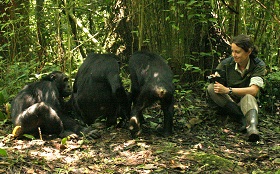
Cat studies the evolution of social behaviour and communication, in particular through long-term field studies of wild chimpanzees.
During her PhD she conducted the
first systematic study of gestural communication in a wild ape, working in the Budongo Forest Reserve in Uganda with the Sonso chimpanzee community. Like humans, apes do not gesture or vocalise in isolation – their communication combines calls, gestures, facial expressions and body postures; in order to better understand their communication and cognition Cat and her fellow researchers have integrated the study of all of these separate modalities into a single study of communication. Through this work Cat hopes not only to advance our understanding of great ape communication but also by looking at areas of overlap or species specific traits, they hope to gain an understanding of the evolutionary origins of language.
In addition to this work Cat studies the acquisition and flexibility of social behaviour. She has recently set up the habituation of a new neighbouring community at the Budongo Conservation Field Station, looking at the effect of female immigration on their behavioural repertoires.
What was your childhood ambition?
I always loved exploration and adventure; I travelled a lot and read everything I could get my hands on from space-travel to adventures under the sea or in the Amazon.
What inspired you to get involved in the field of primatology?
I’d learned about evolutionary theory in school, but it was only in my undergrad degree that I discovered we could apply evolutionary theory to how our minds developed. We can trace not just bones and fossils, but behaviour – speech, culture, tool use – back through evolutionary time! Not long after I was lucky enough to go out to the field for the first time to study baboon ecology. I got my first glimpse of how complex, subtle and fascinating primate society was – combine that with getting to live and work in an incredible rainforest and I was hooked!
Who are your scientific heroes?
That’s a tough one! I’m constantly in awe of the level of detail and insight shown in the early studies of wild apes by people like Jane Goodall, Toshisada Nishida, or George Schaller. I can’t count how many times I think I’ve seen something new, only to find a careful note on it in one of their books from 50 years ago! Then there are the pioneers of ape behavioural research who are still out there showing us how it’s done properly, and still excited and passionate about what they do, people like Wrangham, Mitani and Matsuzawa. And I’ve been incredibly lucky to be supervised and mentored by Dick Byrne at St Andrews, whose work on deception, imitation and communication has changed how we see ape cognition, and who taught me to look for the patterns in behaviour that clue us in to primate minds.
What is the most rewarding part of your job?
Field work with wild apes sounds exciting and exotic, but a lot of it is waking up at 5am to walk 20km crawling through rainforest thicket, with ants in your socks and not a chimp in sight. The plus side of that is that you get to spend the day crawling through a rainforest – so there’s always something to see! And I get to watch and study wild chimpanzees living their lives – whether that’s the big exciting stuff like hunting for monkeys or fighting with the neighbours, or the subtle changes in who sits next to whom, that seem completely innocuous but that represent the first steps toward a coup-d’état that will topple the whole male hierarchy. I’m very lucky that I’ve been able to work with the chimps in Budongo for 12 years. I’ve been able to see the little kids I met when I first came grow up to have kids of their own; it’s been the most incredible privilege to study their lives unfolding. Every day is a little different, and every day I learn something new about them. I also really enjoy the data analysis – getting to tease out the patterns in the data and see the picture of the behaviour start to unfold after years of work is immensely satisfying.
What advice would you give to females and young girls who may be interested in pursuing a career in your field?
The most important thing is to do whatever makes you excited to get out of bed in the morning (even if it’s 5am…!). If you think that might be field primatology then at some point it’s a great idea to get some experience and make sure it’s for you before you find yourself in a remote forest with a return ticket in 12 months. Field-time of any kind is a big help: even if it’s not specifically primates yet, get outside somewhere and get stuck in – somewhere where you have to watch and wait, and where when nothing goes to plan you need to think up a new one. If you’re looking at universities, look for schools that have links to active field sites (St Andrews is one!), and try to do an undergrad or masters that will give you field experience. If you’re not sure you want to go down the academic route but love the idea of primate fieldwork then there are jobs as field-site managers and in conservation organisations – but they will probably still want you to have some field experience, so you might need to think about working as a volunteer or intern for a stint first.
These days twitter is a great online resource for finding out more about specialist areas in science, and a fantastic way to broaden out who you can talk science with. A lot of the primate community is active on twitter, and you can find out what everyone thinks about the latest paper or hear about job and research opportunities as they come up.
Dr Maggie Ellis, Dementia Fellow, School of Psychology and Neuroscience
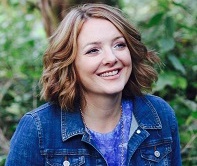
Maggie’s research interests lie in the psychology of dementia where cognitive and social perspectives meet, with a focus on the communication difficulties experienced by people with dementia and those who care for them. Maggie is particularly interested in the interplay between the cognitive and social impact of dementia on personhood and the self of individuals with dementia.
What was your childhood ambition?
I wanted to be a journalist. One of my primary school teachers encouraged me as she thought I had a gift for story composition.
What inspired you to get involved in Psychology, and particularly dementia?
I was aiming to get into clinical psychology and realised very quickly that I needed some volunteering work on my CV. I began volunteering for Alzheimer Scotland at their local day and evening care services and loved it so much that my whole career trajectory shifted.
Who are your scientific heroes?
I have two main scientific heroes: Professor Tom Kitwood and Professor Steven Sabat. They both transformed the way we view dementia and those living with the condition.
What is the most rewarding part of your job?
Engaging with individuals with advanced dementia who have lost the ability to speak and helping their family members and caregivers to connect with them.
What advice would you give to females and young girls who may be interested in pursuing a career in your field?
My main piece of advice would be to volunteer for a dementia charity or day care service. This helped me immensely in terms of attaining hands-on experience and knowledge of dementia from a non-scientific perspective.
Dr Catriona Harris, Senior Research Fellow, School of Biology (CREEM)
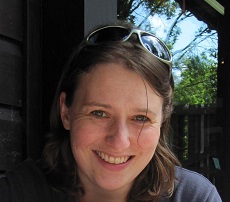
Catriona is a marine ecologist at the Centre for Research into Ecological and Environmental Modelling (CREEM). She completed her undergraduate degree in Zoology (Marine & Fisheries) at the University of Aberdeen in 1999, and then moved to the Sea Mammal Research Unit (SMRU) at the University of St Andrews to do her PhD research into grey seal breeding distribution and abundance around the UK. Since 2004 she has been based in CREEM carrying our research on the impact of human activities on marine mammals, specifically quantitatively assessing risk associated with noise exposure, and analysing individual animal responses to disturbance and potential population consequences. She also has an interest in the development of statistical methods for marine mammal detection and density estimation for risk mitigation and conservation purposes.
What was your childhood ambition?
I’ve wanted to be a marine biologist since I was about 13 years old when I took up diving.
What inspired you to get involved in marine ecology?
I’ve always loved nature and being outdoors, and had some wonderful biology teachers at school – one of whom was an ecologist, and from early on I knew that was the route I wanted to take. I took a wide variety of courses at university, but the ones that I found most inspiring were the marine ecology and marine physiology courses – again, I was lucky to have some great lecturers who provided the advice and support I needed to move into a career in research.
Who are your scientific heroes?
David Attenborough, both as a naturalist and a presenter. His passion, and his ability to communicate with – and enthuse – others about nature and conservation make him a hero.
What is the most rewarding part of your job?
Collaborating with lots of interesting people around the world (and in St Andrews!), feeling part of the international marine mammal/marine ecology community, and engaging with industrial and military users of the marine environment. I also love, and feel strongly about, communicating my research to the public, in particular participating in public and school science events.
What advice would you give to females and young girls who may be interested in pursuing a career in your field?
Some of the best advice I received early in my career was not to focus on a particular taxa – be flexible and think about the larger ecological questions that are of interest to you, and what skills you could learn by working in different areas. My first job after my PhD on grey seals was to model the spread of the invasive plant, Rhododendron ponticum. This opened my eyes to a different branch of ecology, and the spatial modelling skills I picked up on this job opened the doors to move back into my preferred field of marine mammal ecology.
Professor Sharon Ashbrook, Professor of Physical Chemistry, School of Chemistry
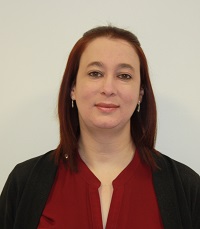
Following a DPhil at the University of Oxford (2001), Sharon completed postdoctoral work at the University of Exeter, before being awarded a Royal Society Dorothy Hodgkin Fellowship, which she held at the Department of Earth Sciences, University of Cambridge. During this time she also held the Charles and Katherine Darwin Research Fellowship at Darwin College. From October 2005, she was appointed as an RCUK Academic Fellow in the School of Chemistry at St Andrews, and was promoted to Reader in 2009 and Professor in 2013.
In 2016, Sharon was a co-author of the booklet Academic Women Now: experiences of mid-career academic women in Scotland and, this year, was the recipient of a Suffrage science award for women in Engineering and Physical Sciences. Her research involves the study of atomic-scale structure, disorder and dynamics in solids using a technique called Nuclear Magnetic Resonance (NMR) spectroscopy. She combines experiments with computation to understand inorganic materials, including high-pressure minerals, catalysts and ceramics.
What was your childhood ambition?
My childhood ambition was to be a primary school teacher – following in the footsteps of both of my parents. I spent my childhood marking exercises “completed” by my teddy bears and dolls and forcing my brother to sit in my classes. Not sure he has ever recovered from this…
What inspired you to get involved in Chemistry?
I was inspired by a very enthusiastic Chemistry teacher at secondary school, where I really enjoyed the combination of the theoretical challenge and the practical part of the subject. During my undergraduate degree I became more attracted to Physical Chemistry – as the experiments here involved fewer dangerous chemicals, and was given the opportunity to do a final year research project in NMR spectroscopy. I didn’t really have any burning ambition to be an academic, I just enjoyed doing science and learning about the subject and continued along this path.
Who are your scientific heroes?
There are a number of scientists, both male and female, that I have admired over the years, some in my specialist field and others in different disciplines. If I had to pick one person, I think I would pick Dame Jocelyn Bell Burnell. I admire her not just for her scientific contribution, but also for the leadership role she has taken in encouraging women in STEM, and supporting younger scientists. I had the pleasure to work with her last year when she wrote an afterword for our booklet on mid-career women and was instrumental in helping to promote this project to a wide audience.
What is the most rewarding part of your job?
In research, I really enjoy seeing new results for the first time, particularly ones that make you think: ‘Why on earth is it doing that?’ I enjoy discussing theories and ideas with my research group and coming up with plans to prove these (which sometimes work). However, in recent years, I have also found undergraduate teaching one of the most rewarding parts of the job, as you can often see you are making a difference to someone.
What advice would you give to females and young girls who may be interested in pursuing a career in your field?
The advice I was given by my parents and teachers was to do what you enjoy. If you enjoy something you will generally work harder and usually achieve more. There is no reason why you can’t choose any field or career and you should just follow your interests and not worry too much or plan too far ahead.
Silvia Paracchini, Royal Society University Research Fellow, School of Medicine
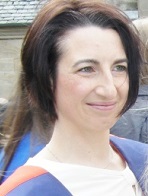
The goal of Silvia’s research is to understand how variation in our genomes contribute to differences in cognition and behaviour in different people. She is particularly interested in finding genes contributing to common disorders like dyslexia and traits like handedness. Silvia works with many people around the world to collect lots of measures on many children and then correlate these measures with their genetics. When they find interesting genes, the team then try to understand their function in cells and organisms like zebrafish. Silvia moved to St Andrews in 2011 when she was awarded a Fellowship from the Royal Society. She had been a postdoc at the University of Oxford (from 2003 to 2011) where she also did her PhD (from 1999 to 2002); she graduated in Biological Sciences at the University of Pavia in Italy. In 2014, Silvia became a member of the Young Academy of Scotland and started blogging about science reporting in the media.
What was your childhood ambition?
To be an air hostess first – thinking it was the best way to travel a lot – and then to win a medal at the Olympics. I was training very hard in rhythmic gymnastics and also did lots of other sports, but after finding out I had serious back problems I had to think about plan B. I would be lying if I told you that I always wanted to be a scientist, but it is fair to say that I preferred science subjects at school.
What inspired you to get involved in Medicine?
Chance. When it was time to choose what to do at University it was not an obvious choice. But I do remember that the defining moment was to think about what was the most interesting thing I had ever study and Mendel’s experiments came to mind. It was a good choice and genetics always remained my favourite subject.
Who are your scientific heroes?
Again, it would be a lie to tell you that I was inspired by some giant female figures in the history of science. But I was lucky to have fantastic mentors throughout my training and I often look back on what I learnt from them. I would like to mention a special person who I think has inspired me and many: Professor Pardis Sabeti. In addition to being a very successful scientist and doing lots of important work in the genetics of infectious disease, she is also a rock singer/songwriter.
What is the most rewarding part of your job?
After public lectures, when somebody with dyslexia or their parents come to thank me for my work. Most of my time is spent in front of a computer, so it is important to keep a connection with the real world. The most exciting part, however, is when one of my students come to show me the results they got in the lab.
What advice would you give to females and young girls who may be interested in pursuing a career in your field?
Do not think for a minute you are not clever enough for this business. But also do not think that opportunities are on your doorstep. Be prepared to move around and follow the opportunities that might come about, or to be proactive and create them.
Category Public interest stories